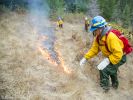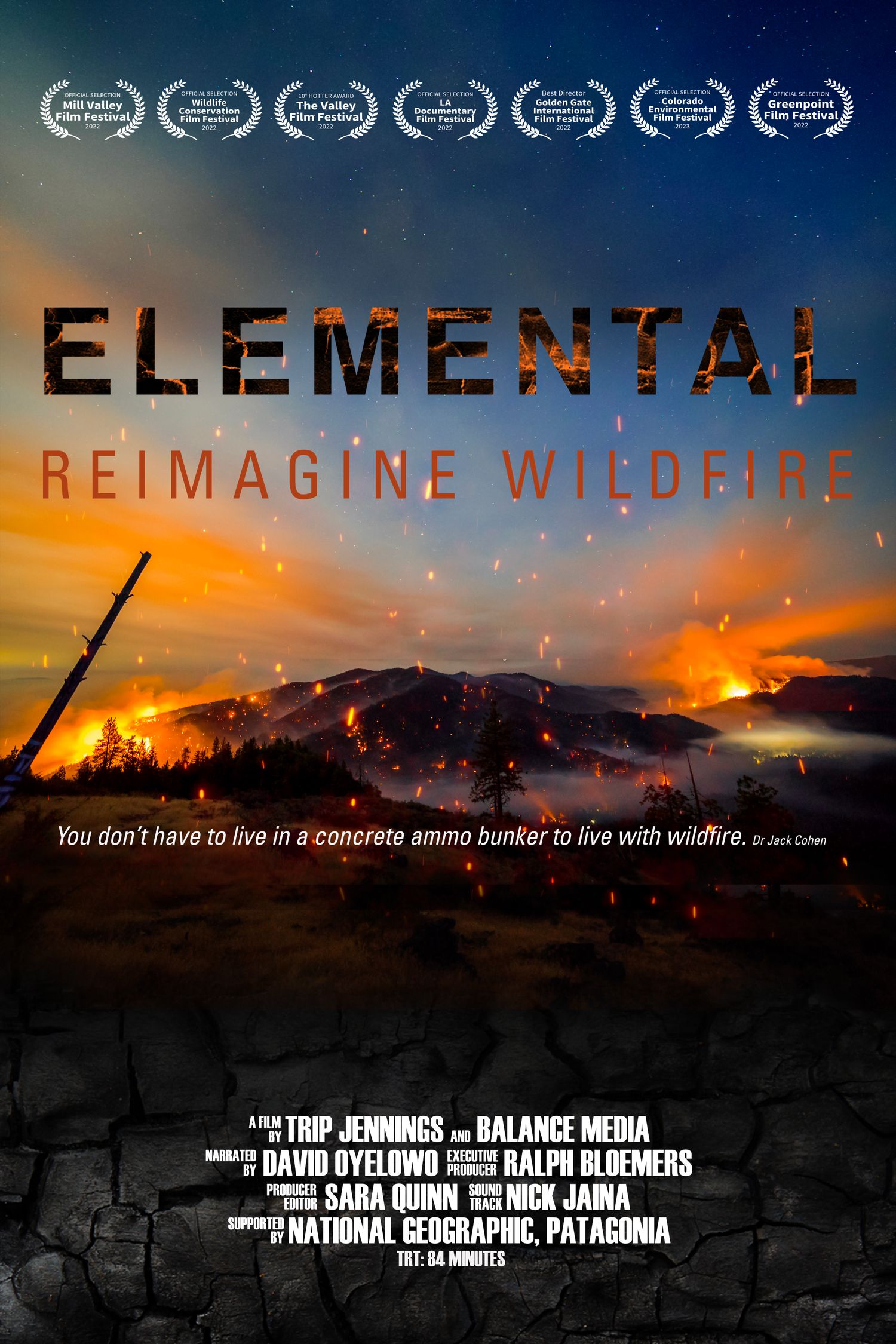Eye For Film >> Movies >> Elemental: Reimagine Wildfire (2023) Film Review
Elemental: Reimagine Wildfire
Reviewed by: Jennie Kermode

There were 66,255 wildfires in the US last year, burning a total of 7,534,403 acres of land including forest, grassland and towns. Brazil had over 200,000 and lost over two million acres, an area roughly the size of Austria, which EU countries lost ten times that much land between them. In a hotter, drier world with stronger winds and more people living in at-risk areas, fire is something we’re going to have to adapt to, but how do we do that? Can we get better at putting out fires, or do more to prevent them from spreading in the first place?
Trip Jennings’ documentary begins with a quick tour of US states recently affected by devastating fires, bringing the issue home to his core audience. It then focuses on California, which is pretty much the perfect environment for fire to thrive in. Los Angeles county, in particular, is dry and hot with a dense population, difficult ground for firefighters to move across and highly combustible vegetation. To make things worse, lots of people there live in wooden houses. This area is not actually getting more fires than usual, we’re told, but they are much more destructive than they used to be. Whole towns have been wiped out: Paradise, Concow, Weed, Greenville and more. “It was as black at noon as it would be at midnight with no stars,” remembers a firefighter of one of those blazes.

We have all seen that kind of footage. It is used sparingly here – we don’t need to see it again and again to get the message. Long, tree-lined roads turned into tunnels of fire. Those who can keep their heads frantically driving; others screaming like trapped animals in the back seats. People trying to reach and rescue loved ones without cars driving the other way, jamming up the roads as burning branches fall down onto them. Desperate efforts to drive offroad. Fire engines running out of fuel, stranding their own personnel.
“This is a physics problem,” says Jack Cohen of Missoula Fire Services Lab.
He’s right, of course. Step back from the emotional impact of it all and it’s possible to explore science-based solutions. Testing is difficult, of course, but we see how at-risk areas are monitored and how data is collected when real fires occur. The film explores the logging and thinning techniques which have been used in the past to try to create fire breaks – areas which the flames cannot cross – but these are not as effective as you might think, for reasons which seem obvious when they are explained. What’s more, although forest fires look more spectacular and therefore get more media attention, overall grassland fires do more damage and are harder to put out.
What if this problem had been solved before?
The Yurok people have lived in this area for centuries. It’s a fire-adapted forest, their representatives here explain, and they are a fire-adapted people. Before European settlers arrived, they managed the forest by using prescribed fires: deliberate, controlled blazes designed to create much more effective fire breaks and remove the most flammable material from an area. Techniques for doing this were passed along from one generation to the next, and it was considered a sacred duty. White people did not see it that way. This went badly for the Yurok people, and it means that today, the forest in the area has missed out on over a century of fire control work, leaving it in tinderbox condition.
Thankfully, changing social attitudes have facilitated new cooperation. The film explores the efforts now being made to combine old knowledge and modern techniques into more effective modes of fire control, variants on which could bring hope to people all around the world. We also see work being done on making houses more resilient, which largely comes down to thinking about the environment rather than using the same architectural models everywhere. You can try some of this latter stuff at home. Despite touching on traumatic experiences which may be upsetting for viewers who have been caught in fires themselves, Elemental is a surprisingly positive film about those rising up to meet a crisis with resourcefulness and courage.
Reviewed on: 06 Jun 2023


















